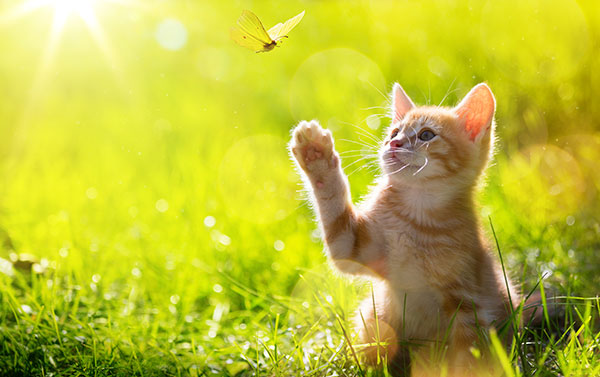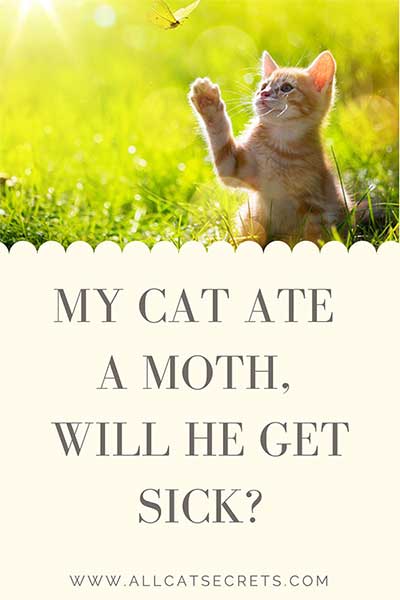Cats are highly curious and adventurous pets who normally don’t care what they put in their mouths.
Cats are especially curious about moving things, particularly crawling and flying insects. Incidentally, insects like butterflies and moths also happen to be a common sight in many homes around the world.
If you’re a proud cat owner whose home is infested with moths, you’ll occasionally bump into a couple of dead moths in the doorway. You might even catch your cat in the act of chasing down moths and nibbling on these insects.
As a concerned pet parent, you might wonder whether moths are safe or toxic to your feline friend. But are moths poisonous to cats?
The short answer is ‘No.’ A cat can safely eat a few moths without experiencing any worrying side effects.
Moths are technically animals and cats are known to thrive on a diet of animal-based products. So, it’s logical to conclude that your feline companion may benefit nutritionally from snacking on a moth or two.
Table of Contents
Are Moths Safe For Cats To Eat?
As we’ve just mentioned, a few moths are okay for cats to eat. But as you shall find, allowing your kitto to eat moths freely isn’t an excellent idea.
One specific moth variety cited by many pet parents as causing severe toxicity in cats is Garden Tiger Moth. However, even Garden Tiger Moth is unlikely to kill your feline friend.
It’s also worth noting that most cats will simply play with moths as opposed to hunting down and eating these insects. Plus, the toxicity of moths for cats mostly comes down to the bug sprays used to deter or exterminate these insects. More on that later on.
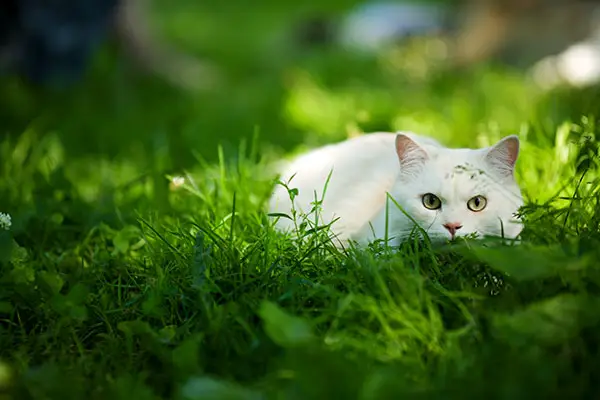
More About Moths
Moths are a group of insects that comprise all members of the order Lepidoptera, which are not butterflies.
Moths make up the vast majority of the order Lepidoptera. They fall within the following taxonomic units;
- Kingdom: Animalia
- Phylum: Arthropoda
- Class: Insecta
- Order: Lepidoptera
- (unranked): Heterocera
Scientists estimate that there are about 160,000 different moth species out there. However, only a handful of these species have been widely studied.
Most moth species are nocturnal (active at night). That explains why you’ll often spot them at night around light sources like lamps. However, there are a few moth species that are diurnal (active during the day) or crepuscular (active at dawn and dusk).
Besides their love affair with light sources, moths also love dusky areas with lots of fabrics to chew on. You’ll normally find them sneaking into storage and crawl spaces through open doors or torn screens.
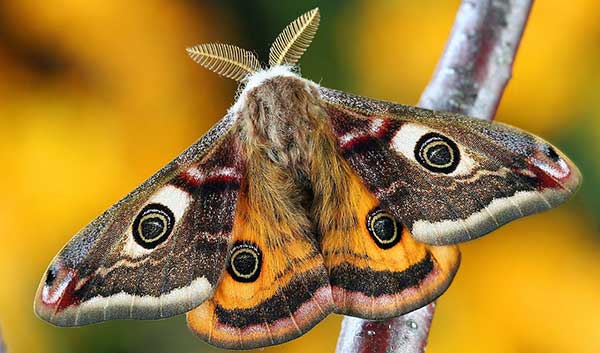
Are moths similar to butterflies?
Although they’re difficult to distinguish from one another, moths and butterflies have distinct morphological differences. The primary difference between these insect groups is that butterflies comprise a monophyletic group whereas moths, which make up the rest of the order Lepidoptera, do not.
Butterflies are also distinguishable by their thin antennae and small balls near the end of each antenna. On the other hand, moth antennae are generally feathery and lack balls at their ends.
Besides their morphological differences, moths are also believed to have evolved way earlier than butterflies. Archaeologists have since found moth fossils dating as far back as 190 million years ago.
Another crucial thing to know about moths is that they exist as caterpillars in their larvae stage.
- High protein cat food dry formula with real chicken as the first ingredient
- Natural with prebiotic fiber nourishes specific intestinal bacteria for digestive health
- Wholesome cat food dry kibble with vitamin A and Omega-6 fatty acids to nourish skin and coat
Last update on 2024-07-11 / Affiliate links / Images from Amazon Product Advertising API
Why Do Cats Eat Moths?
During periods of moth infestation, it’s not unusual to find cats chasing after these insects and munching on them. It’s also during this period that many cat owners would wonder, ‘is it dangerous for cats to eat moths?’
Before we delve deeper into the safety or potential risks of moths for cats, it’s important to understand whether cats love moths in the first place.
So, why does my cat eat butterflies and moths?
Now, we began by mentioning that cats are inquisitive animals and that they tend to be particularly curious about things that move. A cat will rarely pass up an opportunity to chase after crawling animals like lizards or flying insects like moths. It’s all part of their evolutionary instincts.
Before domestication by man, the domestic cat was a stealthy and ruthless hunter. But even after domestication, these animals have retained most of their wild instincts, including their strong prey drive. So, a moth fluttering around the house is just enough to pique your cat’s curiosity and ignite his hunting instincts.
It’s also worth noting that most cats are crepuscular animals, while some are nocturnal. These also happen to be the same periods that moths are generally active. For cats that lack sufficient stimulation, playing with, as well as eating moths, may be their ideal way to spend their waking hours.
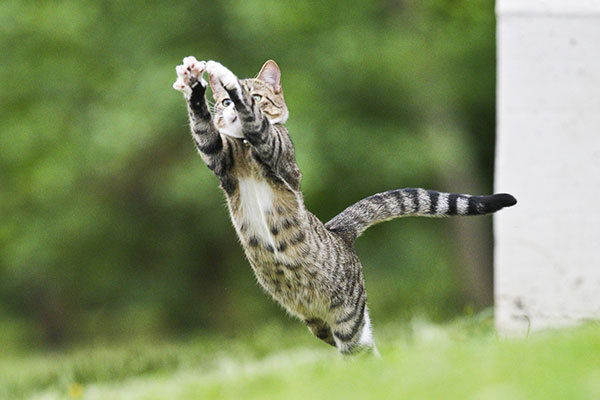
Is it safe for my cats to eat moths then?
Now that cats find moths attractive, you could be wondering, ‘Is it ok for cats to eat moths?’
Well, the answer is ‘yes.’ However, you probably should avoid letting your cat munch on moths or any other flying bugs.
Why Can Cats Eat Moths?
Cats are obligate carnivores. Which means that they derive their nutritional requirements from animal products, including lean meat, blood, skin, and bones.
Moths are technically animals. Therefore, it’s logical to conclude that your cat will be fine after gobbling these insects.
In fact, cats are known to munch on plant-based foods too. You may have caught your feline friend nibbling on grass blades or catnip leaves in your backyard from time to time.
So, from a nutritional point of view, moths are perfectly okay for cats. But as you shall find in the next section, there are potential risks of moths for cats.
Why Can’t Cats Eat Moths
Moths have a toxic powdery substance on their wings. While this substance is generally harmless to moths, it might cause a host of digestive complications in cats. That’s one of the primary reasons veterinary officers advise against letting cats eat moths.
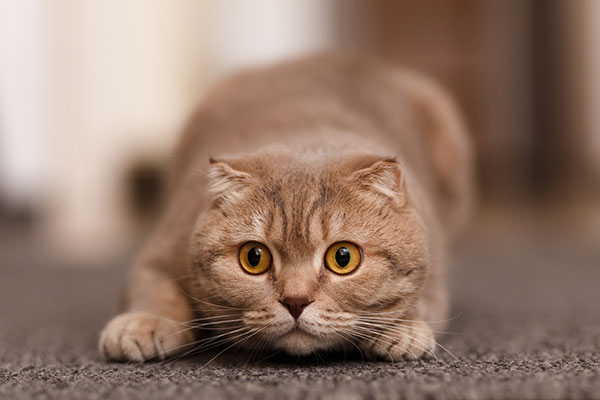
So, what happens if a cat eats a moth?
Vomiting and diarrhea are the most common side effects of moth toxicity in cats. Depending on the severity of these symptoms, they may lead to further complications like loss of appetite, dehydration, and lethargy.
Another reason cats should stay away from moths is that these insects could sting your feline friend. That’s especially true for moths in their larvae stage. Caterpillars are notorious for inflicting painful stings using the chemicals on the ends of their barbs or the hairs across their bodies.
The stings could leave your cat in excruciating pain. Also note that while caterpillar stings are generally harmless, the stings from certain exotic caterpillars could be toxic.
But perhaps the biggest concern with moths for cats comes from certain bug sprays commonly used in controlling these insects. Mothballs are some of the most common bug sprays used to repel or kill moths, and which could be toxic to cats.
Mothballs are solid pesticides which slowly release a vapor that repels or kills moths. The pesticides can also kill moth larvae and a host of other insects. Some homeowners even use them to repel snakes, rodents, and other animals.
- Cat tower in Gray designed to engage indoor cats in climbing and scratching and cozy naptime
- 2 sturdy scratching posts, plush suspended hammock, secure base, and a replaceable dangling soft ball toy
- Natural jute fiber provides an optimal texture for cats to sharpen claws and keep nails healthy
Last update on 2024-07-11 / Affiliate links / Images from Amazon Product Advertising API
But are mothballs harmful to cats and how toxic can these pesticides be?
Yes, mothballs are highly poisonous to cats. These products are formulated with the insecticides paradichlorobenzene (PDB), naphthalene, and, in some cases, camphor. Each of these chemicals is potentially poisonous to cats. Toxicity normally occurs when cats ingest the chemicals.
Some of the common side effects of mothball toxicity include;
✔ Gastrointestinal issues, such as nausea and vomiting, diarrhea, loss of appetite, bloating, and abdominal pains.
✔ Dehydration, which often results from vomiting and diarrhea.
✔ Anemia-like symptoms, such as increased risks of bleeding, lethargy, elevated heart rate, labored breathing, and fever.
✔ Neurologic signs like seizures.
✔ Signs of kidney damage, such as vomiting, loss of appetite, increased or decreased drinking and urination, and foul-smelling breath.
✔ Signs of liver damage, such as vomiting, decreased appetite, diarrhea, lethargy, discoloration of the stool and urine, and jaundice.
So, can cats eat mothballs?
No, cats shouldn’t eat mothballs. Even the tiniest amount of mothballs could kill your cat.
Mothball toxicity may not just result from your cat ingesting mothballs directly. It could also occur when your cat eats moths that have been poisoned with these insecticides.
How Many Moths are Safe for My Cat to Eat?
There’s no hard and fast rule in determining the number of moths that cats can eat. It depends on a number of factors, such as your cat’s age, body size, and overall health.
Usually, foods or substances considered harmful to cats in general tend to be more toxic for kittens and smaller cat breeds.
The same rule applies to cats with suppressed immunity. Examples include pregnant or breastfeeding cats, senior cats, sickly cats, and cats recovering from a surgical operation.
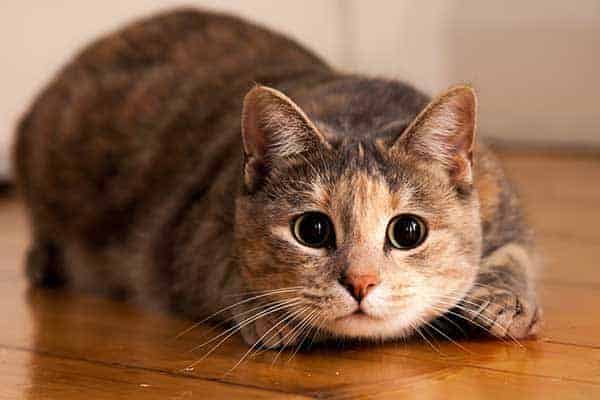
What to Do If Your Cat Ate Moths?
If your cat has a penchant for hunting down and munching on moths, you’ll occasionally find yourself wondering, ‘my cat ate a moth, will he get sick?’
As we’ve reiterated throughout this post, one or two moths will not harm your cat. However, gobbling too many moths could come with disastrous consequences.
The first thing to do if your cat ate moth is to watch out for any of the signs and symptoms we’ve listed above. The severity of the symptoms will clue you in on the quantity of moth that your cat may have been exposed to.
It’s advisable to undertake urgent remedial measures to prevent the early symptoms from escalating into a life-threatening condition. For instance, you can administer activated charcoal to prevent further absorption of the toxins into your cat’s bloodstream. You could also administer hydrogen peroxide to induce vomiting.
Most importantly, remember that these are just temporary measures you take to stabilize your cat as you prepare to take him to the vet.
As with most toxic compounds for cats, the conventional wisdom is to prevent your cat from eating mothballs in the first place.
You can do that by implementing the following tips;
1- Offer your cat enough physical stimulation (through exercise) and mental stimulation (through interactive toys).
2- Use cat-safe pesticides to repel moths from your compound.
3- Seal door cracks and block hollow screens to prevent moths from finding their way into your house.
Conclusion
Moths are classified alongside butterflies and many other insects as bugs that cats can eat. However, the fact that cats can eat moths doesn’t mean they should.
As with most bugs, consuming too many moths could be harmful to your feline friend. It’s worse if the moths are contaminated with mothballs or other pesticides considered highly toxic to cats.
Checkout Our Favorite Cat Products
1. Best Online Course For Cat Parents
Our favorite: The Cat Language Bible (How to Finally Understand And Speak to Your Cat) – A new form of cat to human communication that many cat owners have dreamed about… but few have actually thought possible.
2. Best Immune Support For Cats
Our favorite: Tomlyn Immune Support – Best Supplement for Cats and Kittens.
3. Best Cat Treats
Our favorites: LIFE ESSENTIALS All Natural Freeze Dried Chicken And Sheba Meaty Tender Sticks – Both are Great.

